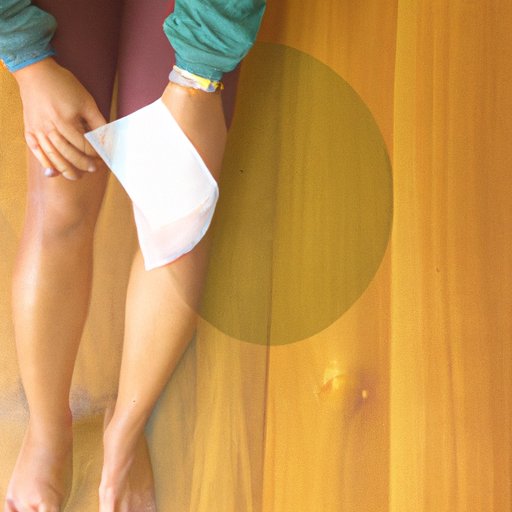
I. Introduction
If you have ever dealt with swollen legs, you know how uncomfortable and frustrating it can be. Swollen legs can be caused by a variety of factors, including standing or sitting for extended periods, certain medications, or medical conditions like heart or liver disease. Regardless of the cause, it’s essential to take action to relieve swelling and reduce discomfort. This article will provide you with tips and remedies to get rid of swollen legs fast.
II. Hydration
Proper hydration is essential for overall health, but it can also be beneficial for reducing swelling in your legs. Drinking enough water can help flush out excess fluids and toxins that may be contributing to swelling.
On average, the daily recommended water intake for adults is about 8 cups (64 ounces). However, this may vary depending on factors like age, sex, and physical activity level.
If you struggle to drink enough water, try adding some flavor with fresh fruits or herbs. You can also set reminders to drink water throughout the day or invest in a reusable water bottle to bring with you on the go.
III. Leg Elevation
Elevating your legs is a simple and effective way to reduce swelling. Elevating your legs above your heart can help improve circulation and prevent fluid buildup in your legs.
When elevating your legs, lie down on your back and prop your legs up on pillows. You can also try elevating your legs while sitting by using a footrest or ottoman.
If you’re unable to elevate your legs, try taking frequent breaks to stretch and move around while standing or sitting for extended periods. You can also try wearing compression stockings or sleeves.
IV. Compression Therapy
Compression therapy involves wearing compression stockings or sleeves that apply pressure to your legs, promoting better circulation. Compression therapy can also help prevent fluid buildup and reduce swelling.
There are different types of compression therapy available, including graduated compression stockings, anti-embolism stockings, and compression sleeves.
To get the most benefit, it’s important to wear compression stockings or sleeves correctly and consistently. It’s best to put them on in the morning and wear them throughout the day, taking them off before bed.
V. Exercise
Physical activity can help improve circulation and prevent fluid buildup in your legs. Low-impact exercises like walking, swimming, and cycling can be effective for reducing swelling. Aim for at least 30 minutes of exercise per day, five days a week.
If you’re new to exercise, start slowly and gradually increase your activity level. If you have a medical condition, talk to your doctor before starting an exercise routine.
You can also try incorporating stretching and leg exercises into your routine. Some examples include ankle pumps, leg lifts, and calf stretches.
VI. Massage
Massage can help improve circulation and reduce swelling in your legs. Gently massaging your legs can help move excess fluid out of your legs and back into your bloodstream.
Try massaging your legs using long, sweeping strokes, starting at your ankle and moving up towards your thigh. You can also use circular motions and apply gentle pressure to your legs.
It’s best to massage your legs for about 5-10 minutes at a time, a few times a day. If you experience any pain or discomfort, stop immediately and consult your doctor.
VII. Dietary Changes
What you eat can also contribute to swelling in your legs. Eating a diet high in salt, sugar, and processed foods can cause water retention and increase inflammation in your body.
Try incorporating more potassium-rich foods into your diet, such as bananas, avocados, and spinach. Potassium can help regulate fluid balance in your body and reduce swelling.
Additionally, try cutting back on caffeine and alcohol consumption, as these can also contribute to swelling. Instead, try drinking more water and herbal teas like ginger or chamomile, which have anti-inflammatory properties.
VIII. Herbal Remedies
Several herbs have anti-inflammatory properties that can help reduce swelling in your body. Some effective herbs for reducing swelling include ginger, turmeric, and dandelion.
You can incorporate these herbs into your diet by drinking herbal teas or cooking with them. However, it’s important to use caution when using herbal remedies, as some herbs can interact with medications or have adverse effects on certain medical conditions. Always consult with your doctor before trying herbal remedies.
IX. Conclusion
Swollen legs can be uncomfortable and frustrating, but there are many ways to reduce swelling and improve circulation. By staying hydrated, elevating your legs, using compression therapy, exercising, massaging your legs, making dietary changes, and trying herbal remedies, you can reduce swelling and improve your quality of life.
However, if swelling persists or becomes severe, it’s important to seek medical advice as it may be a sign of a more serious underlying condition.




